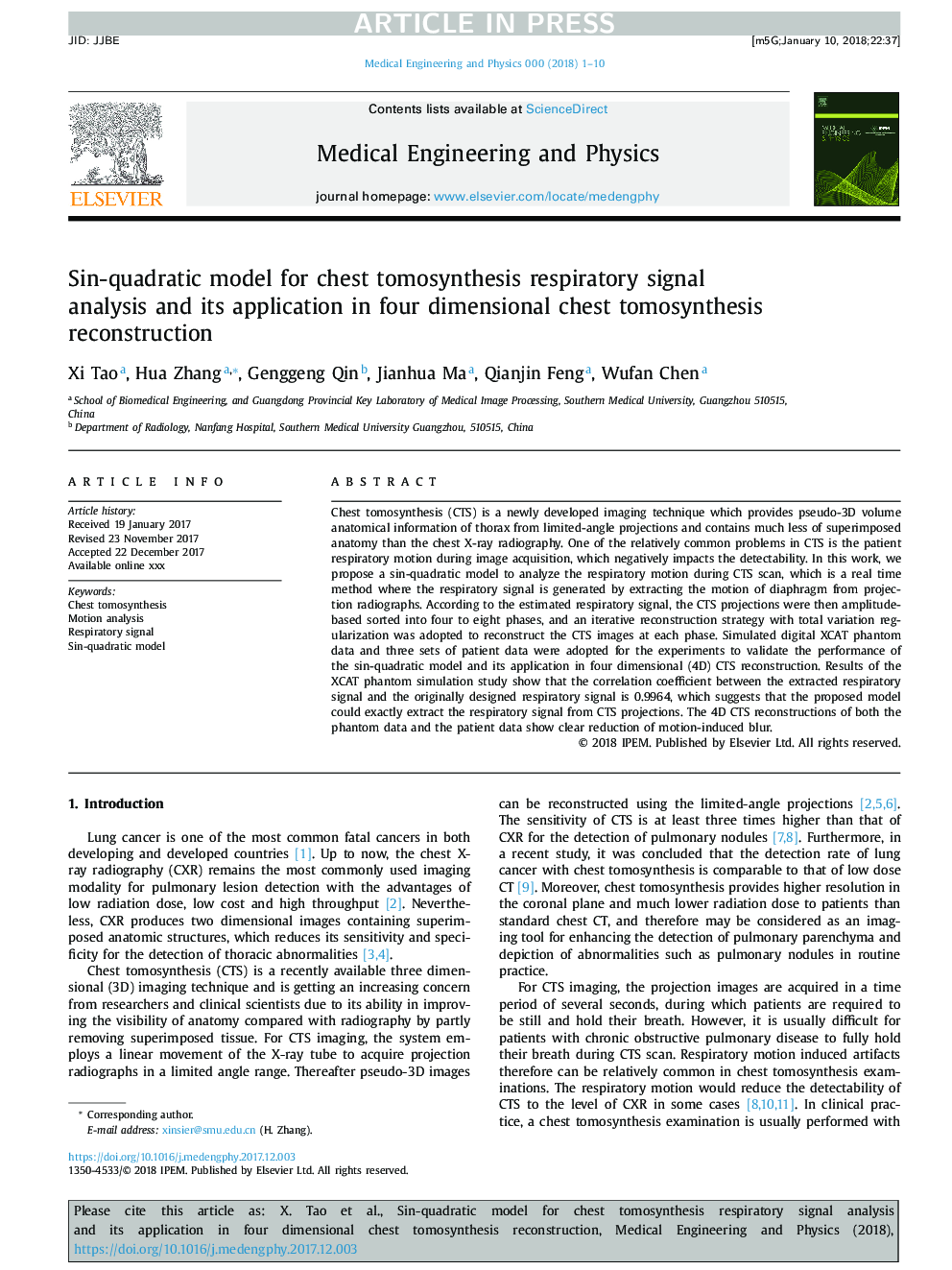| Article ID | Journal | Published Year | Pages | File Type |
|---|---|---|---|---|
| 7237484 | Medical Engineering & Physics | 2018 | 10 Pages |
Abstract
Chest tomosynthesis (CTS) is a newly developed imaging technique which provides pseudo-3D volume anatomical information of thorax from limited-angle projections and contains much less of superimposed anatomy than the chest X-ray radiography. One of the relatively common problems in CTS is the patient respiratory motion during image acquisition, which negatively impacts the detectability. In this work, we propose a sin-quadratic model to analyze the respiratory motion during CTS scan, which is a real time method where the respiratory signal is generated by extracting the motion of diaphragm from projection radiographs. According to the estimated respiratory signal, the CTS projections were then amplitude-based sorted into four to eight phases, and an iterative reconstruction strategy with total variation regularization was adopted to reconstruct the CTS images at each phase. Simulated digital XCAT phantom data and three sets of patient data were adopted for the experiments to validate the performance of the sin-quadratic model and its application in four dimensional (4D) CTS reconstruction. Results of the XCAT phantom simulation study show that the correlation coefficient between the extracted respiratory signal and the originally designed respiratory signal is 0.9964, which suggests that the proposed model could exactly extract the respiratory signal from CTS projections. The 4D CTS reconstructions of both the phantom data and the patient data show clear reduction of motion-induced blur.
Keywords
Related Topics
Physical Sciences and Engineering
Engineering
Biomedical Engineering
Authors
Tao Xi, Zhang Hua, Qin Genggeng, Ma Jianhua, Feng Qianjin, Chen Wufan,
